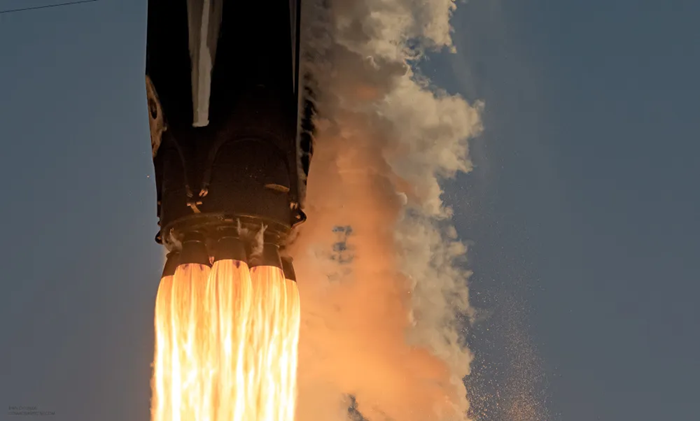The adiabatic flame temperature in combustion studies is the highest temperature a flame can extend under ideal conditions. It acts as the theoretical upper limit for flame temperatures in ideal settings if all the enthalpy of combustion is entirely transmitted to the resulting gases.
A 100 % equivalence ratio suggests an ideal stoichiometric mixture, where all the fuel responds completely with all obtainable oxygen. This scenario increases the flame temperature since no energy is used to heat excess oxygen or unreacted substances.
In real-world situations, flame temperatures are commonly less than the adiabatic flame temperature at a 100 % equivalence ratio. The maximum flame temperature happens when all the energy from combustion is employed to heat the gaseous combustion products. This optimum temperature is reached when there is enough air for complete combustion.
Any excess air will absorb some of the combustion energy and reduce the flame temperature. If there is inadequate air, incomplete combustion lowers the energy emitted, causing a decreased flame temperature.

Image Credit: Optris GmbH & Co. KG
Precise flame temperature measurements are critical for creating and examining innovative fuels in rocket propulsion and other high-performance functions. These measurements assist scientists in improving fuel compositions and boosting their performance.
Flame temperature measurement is also crucial for enhancing combustion methods. Correct temperature data supports improved combustion control, accelerating heightened productivity and decreased emissions.
Flame temperature measurement is also key in assessing fuel composition performance. Recognizing how diverse chemical reactions happen at changing temperatures enables businesses to produce or choose fuels that provide superior efficacy and reduce emissions, benefiting environmental sustainability.
Thermocouples are the most widely utilized conventional instrument for assessing flame temperature. They comprise two distinct metal wires united at one end to create a junction, which produces a voltage matching the temperature when exposed to a flame. This can be evaluated and translated into temperature data.
While thermocouples are broadly employed because of their ease of use and cost-efficiency, they have noteworthy constraints. They supply only point measurements, so they calculate the temperature at the exact location where the thermocouple is positioned in the flame, producing unfinished or incorrect readings, especially in heterogeneous flames.
Thermocouples are invasive and can disrupt the flame and gather soot, triggering miscalculations. Thermocouple measurement precision is influenced by heat exchange via conduction and radiation, causing inconsistencies between the thermocouple and the actual gas temperature.
Non-Intrusive Infrared Thermometry for Precise Flame Temperature Analysis
Infrared thermometry is a non-intrusive technique for assessing flame temperature by identifying the thermal radiation the flame produces. Unlike thermocouples, this approach does not demand physical contact with the flame, preventing possible instability and errors linked to invasive measurements.
During this process, detectors tuned to specific infrared wavelengths measure the radiative emission from the flame. The strength of this radiation is then compared to that of a known blackbody source to verify the flame’s temperature correctly.
A key benefit of infrared thermometry is its ability to measure temperature without bothering the flame. Precise readings, however, demand proper calibration and considering factors like absorption, emissivity, and scattering by combustion gases and soot particles.
Infrared thermometry for flame temperature measurement normally concentrates on a wavelength of approximately 4.3 µm. This wavelength is extremely important as it supports the powerful infrared emission band of carbon dioxide (CO2), a chief product of hydrocarbon combustion.

Image Credit: Optris GmbH & Co. KG
At 4.3 µm, the asymmetric stretch vibration of CO2 molecules is a strong emitter in the infrared spectrum, making it ideal for identifying the flame's thermal radiation.
This focus guarantees that the temperature readings closely reflect the actual flame temperature, as the radiation intensity at this point directly corresponds to the temperature of the CO2 molecules.
The Optris CTLaser F2 pyrometer is specially developed to assess CO2 flame gases precisely within this 4.3 µm spectral range. By targeting this exact wavelength, the pyrometer reduces intrusion from other gases and environmental radiation, improving the precision of flame temperature measurements.
Adjusted for temperature ranges between 200 and 1650 °C, the Optris CTLaser F2 is ideal for numerous industrial combustion procedures. It delivers consistent temperature measurements without physical contact with the flame and protects the combustion process's reliability.
The pyrometer is developed to run successfully in volatile conditions without further cooling, making it a flexible and reliable instrument in industrial environments.
The CTLaser F2 is a Cost-Effective Alternative to Cooled Cameras
The intense heat of flames produces significant infrared radiation, which provides crucial information about the combustion process. The CTLaser F2 offers a durable and economical option for measuring flame temperature, providing a cost-efficient alternative to more costly cooled infrared imaging systems.
While cooled infrared systems deliver excellent sensitivity and accuracy, they have notable drawbacks. They demand sophisticated cooling mechanisms, such as cryogenic cooling or thermoelectric coolers, which increase expenses, maintenance, and operational complexity.
These cooling systems are costly to set up and run and susceptible to failure in challenging industrial settings, resulting in longer downtime and greater maintenance costs.
The CTLaser F2 provides consistent and accurate temperature readings without requiring cooling equipment, making it ideal for industrial applications where cost concerns are significant. Its robust design guarantees long-term performance even in harsh environments, decreasing operational disruption risk.
This affordability, sturdiness, and high precision set the CTLaser F2 as the benchmark for those requiring consistent temperature measurement without the excessive costs and maintenance obligations usually related to cooled infrared technologies.

This information has been sourced, reviewed and adapted from materials provided by Optris GmbH & Co. KG.
For more information on this source, please visit Optris GmbH & Co. KG.